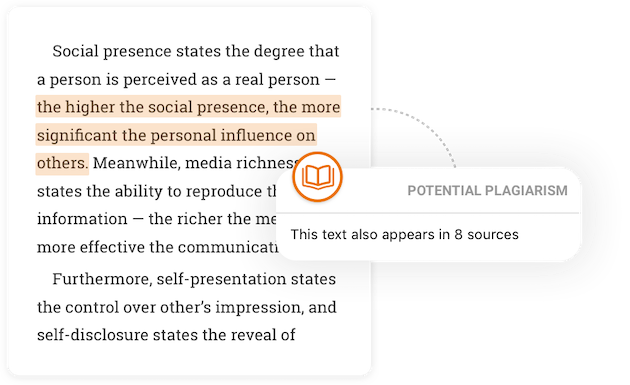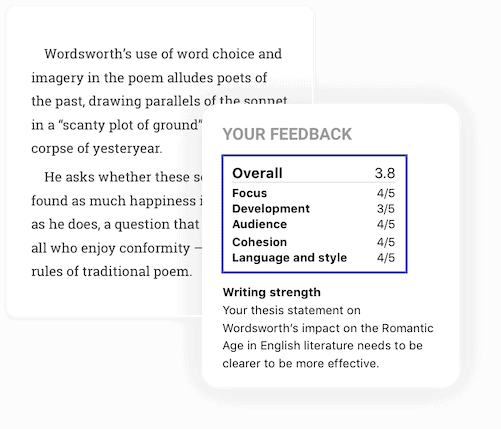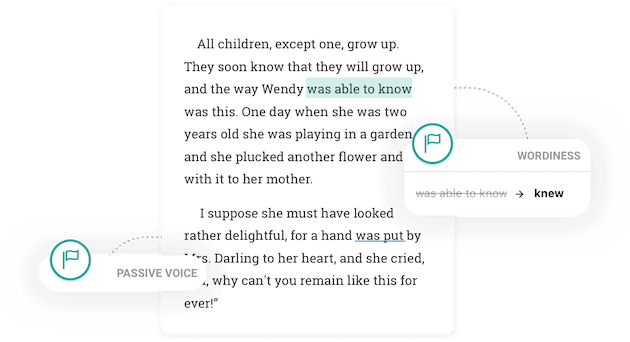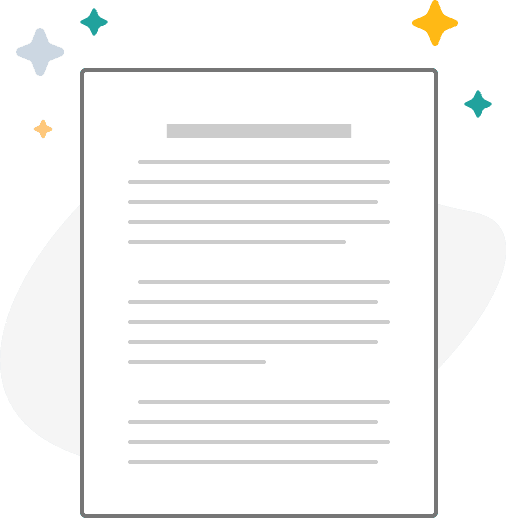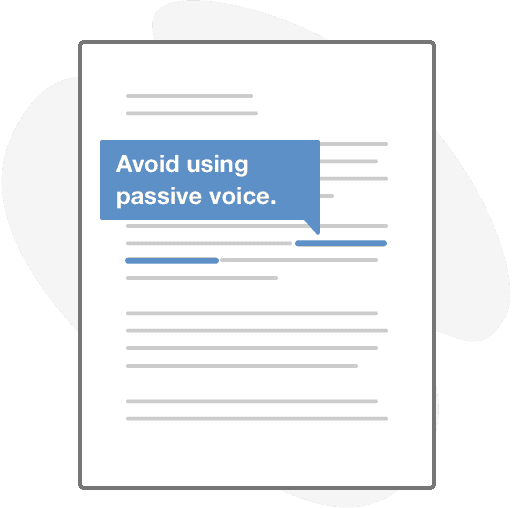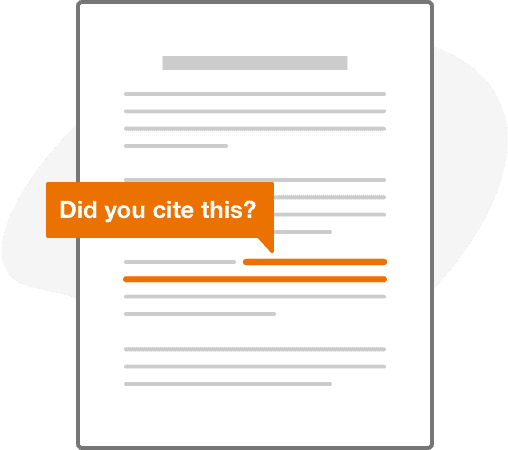What is Plagiarism?
If you’re looking for a free online plagiarism checker, you’re already aware that it’s not something you want to be found in your papers. However, you may still be wondering: what does plagiarism mean? It’s a reasonable question and one that merits exploring. After all, some of the actions and circumstances that fall within the plagiarism definition come as a surprise to those who only learn that they’ve committed them after it’s too late.
So what is plagiarism? To define plagiarism in the most basic sense, you might say that it is taking someone else’s ideas and words and passing them off as your own.
If your goal is avoiding plagiarism entirely, you’ll need to go beyond the basics to thoroughly define plagiarism, recognize it, and keep clear of it. Some examples of plagiarism that students find surprising include forgotten citations, poor paraphrasing, and re-submitting your own work in whole or in part for more than one assignment. This useful article provides more help in recognizing and understanding the different forms that academic dishonesty can take.
Of course, using your own words and ideas does not count as plagiarism, nor does using common knowledge. Basically, common knowledge is information that is well known by the average person. Examples of common knowledge:
- there are 12 months in a year
- the freezing point of Celsius is zero degrees
- Socrates was a Greek philosopher
So should you only include your original thoughts and common knowledge in your papers? Of course not! Research-based assignments are meant to demonstrate your skills as a researcher, after all, as well as your ability to build upon the work of others to formulate new ideas. To avoid accidentally committing an act that falls within the plagiarism definition when you’re using another person’s words or ideas, though, you need to give them proper credit. This means you’ll need to clearly identify direct quotations or properly paraphrase them when including them in your paper.
Regardless of your approach, you’ll also need to cite your sources according to the style your professor specifies. Generally, you will use MLA format for the arts and humanities and APA format for the sciences, but it’s always best to check with your instructor when you’re unsure.
If you know what style to use but still aren’t sure how to create your citations, don’t fret! Our library of resources includes free guides to help you learn about various styles so you can properly structure and place them. And our premium tools not only help you check grammar, spelling, and originality in your papers, but subscribers also enjoy access to our citation creation tools!
What are the Different Types of Plagiarism?
In addition to the question “what is plagiarism,” you may also be wondering, “why do students plagiarize?” While some students do intentionally plagiarize because they believe they can pass off someone else’s work as their own to avoid spending time on their assignments, many others do so accidentally. They may not understand how broad the plagiarism definition is or they haven’t learned how to research and cite their sources properly. That is why it is vital to recognize plagiarism in all of its forms if you wish to ensure the integrity of your work.
Examples of plagiarism & How to prevent it
Direct plagiarism:
Intentionally copying another person’s work without including a citation that gives credit to the source. When most students are asked to identify potential plagiarism examples and behaviors, this direct and deliberate act is what they think of first.
- Prevention: If you use an idea or quote from another source, cite it in the text. Make it clear that it was not your own words.
Incremental plagiarism:
Copying parts of another person’s work, such as phrases, sentences, or paragraphs without crediting the source. When deciding which tools to use to check a paper for plagiarism, instructors often seek out those that will identify incremental forms as well as instances of direct copying and similar phrasing.
- Prevention: Decide to either directly quote the phrases or sentences you want to use, or write a good paraphrase. In both cases, be sure to add a citation. Using a plagiarism checker could also help you identify problematic passages.
Self-plagiarism:
Academic self-plagiarism occurs when a student submits the same paper or parts of a paper for more than one assignment. When your instructors are grading your papers, they’re assessing your research and writing skills in the present. When you submit work that you completed in the past, they are both unable to evaluate your current skills and unaware that you haven’t completed the assignment.
- Prevention: Write a new paper for each assignment you’re assigned. If you feel strongly that your past work could enhance your new paper, speak to your instructor and ask for permission first.
Misleading citations:
Including a citation for a quote or idea that misrepresents the source material. This can occur if a student does not understand the reference they are citing; if a student includes a citation for a disreputable source; or the source material simply does not align with the idea or argument that the student has attributed to it.
- Prevention: Carefully review your assignment to understand it. As you research, take the time to evaluate each source notes. Remember, it’s better to have quality citations over an abundance of citations.
Invented sources:
If a reference in a student’s bibliography is found not to exist, it is considered an invented source. This may occur if a student couldn’t find a reputable source to back their argument, or if they needed to include additional references to meet the requirements of the assignment and chose to take an unethical shortcut rather than completing the required amount of research. No matter the reason, this behavior ultimately hurts them in the long run. Not only will they fail to gain the experience they need to conduct research in the future properly, but they’ll also experience significant consequences if they’re caught.
- Prevention: Set aside time to do proper research so you can find enough sources. Start creating a list of sources as you’re researching and take good notes. This will help you keep track of your sources so none are forgotten. If you do end up forgetting where a quote came from, a paper checker could help you pinpoint the original source.
Patchwriting/Spinning:
Patchwriting is often confused with paraphrasing, but there’s a significant difference. When you paraphrase, you demonstrate that you understand the topic well enough to restate it in your own words. When you patchwrite or spin, it is more akin to a word-swapping game; there’s no need to understand the subject, merely to have access to a thesaurus so you can substitute enough synonyms to mask the source material. This can be intentional, but it may also be a result of having a poor understanding of how to paraphrase.
- Prevention: Using your own words, write down the key points of the phrase or idea, and put them together in a sentence. Be sure to include a citation as well.
A good way to test if you’re patchwriting or paraphrasing is to remove your sources from view. If you can write about what you’ve read without looking at the source material, you likely understand it well enough to paraphrase it. If you have to review the source material with each new sentence or consult a thesaurus while writing about it (except when you’re adding direct quotations), you may be spinning your sources instead of paraphrasing them.
Academic Integrity Policies and Statements
If you’re still uncertain about what counts as plagiarism, look for your school’s/organization’s policies on academic integrity and plagiarism. The policies of academic institutions usually cover what is considered plagiarism, the consequences of committing it, and how to avoid it. One great example is Purdue University’s Academic Integrity statement.
What are the Consequences of Plagiarism?
No matter the setting, plagiarism is not taken lightly, and the consequences can be significant. For a good reason, too! Whether in an academic or professional setting, the plagiarism consequences reflect the seriousness of the act, which is ultimately a form of theft that hurts everyone involved.
Just as with the theft of a tangible object, there can be legal punishments for plagiarism. It is, after all, a form of copyright infringement in many instances. A quick search for plagiarism articles will reveal that professional instances of intellectual theft have resulted in civil lawsuits and can even be criminally prosecuted under rare circumstances. In addition to the possible legal consequences, professionals may lose their jobs or have to start over in a new field after their acts of fraud are uncovered.
As a student, you’re likely to wonder what happens if you plagiarize in college or high school. While there will almost always be consequences for this behavior, there is no one-size-fits-all plagiarism sentence. Depending on the circumstances, academic dishonesty could result in outcomes such as:
- You might get a zero for the assignment in which the infringement occurred.
- You may receive a failing grade for the class. If it is a required course, this could leave you without enough credits to move on to the next level until you can repeat it and, in some instances, postpone graduation.
- You may be expelled from your school or university.
-
The academic dishonesty may be noted on your transcript, which can lead to you not getting into your preferred college, graduate school, or Ph.D. program in the future.
Nobody wants to be known as a fraud or to have a reputation for dishonesty follow them through their career. And, given the consequences that can extend beyond just their reputation, it’s no wonder that professional and academic writers who wish to avoid them take the time to understand the complete definition of plagiarism and run their work through a plagiarism checker before sending it out into the world.
Even the vigilant can fall prey to inferior tools, unfortunately. Before selecting a plagiarism checker, you should understand how they work and what they can (and cannot) detect.
How We Check for Plagiarism
When exploring how to check for plagiarism, most students and professionals conclude that including a checking tool in their revision process is not only helpful but necessary. When you consider the Herculean task of checking each line of your paper against the text of each of your resources, the benefits of a checker are clear. Moreover, this manual approach would only alert you to matching text in the sources you’re aware of, after all, and leaves the sources you haven’t reviewed untouched.
But, hang on. Why would sources you haven’t reviewed factor into your review? The answer to this lies in the plagiarism definition you learned above. What is plagiarism? It’s presenting someone else’s work or ideas as your own, intentionally or otherwise. It is not uncommon to uncover an idea while you’re researching a topic and later misremember it as your own. This might even occur years after you originally came across it.
You might wonder: how can plagiarism be avoided if you have to account for the source of every thought you include in your work? A few exceptions minimize the scope of this. Common knowledge about your topic does not need to be supported by a citation, nor does knowledge that you gained through your personal experience. Using a subscription-based or free plagiarism checker will help you locate any passages that may fall into these categories so you can review them and decide for yourself whether a citation is needed.
EasyBib Plus writing tools provide easy, convenient, and reliable support to help you find potentially missed citations and can help you improve your paper into a high-quality paper with integrity. Simply upload your paper, select the checker, then sit back and relax as the site scans your document. In mere moments, we’ll search the web for passages of similar text and highlight duplicate content for your review.
Regardless of the tools you use to help you revise and polish your work, it’s ultimately your responsibility to ensure that you’re writing and submitting ethical work. That’s why our tools go beyond the basics and require your participation. The tool never automatically makes changes to your paper, but only flags sections that may need your attention and provides you with the matching source so you can to make an educated decision.
If you find that a citation is needed, our citation tools can help you create properly formatted citations and develop a complete bibliography. And, if you review the passage and determine that the match is coincidental, you can dismiss the alert and move on to the next.
